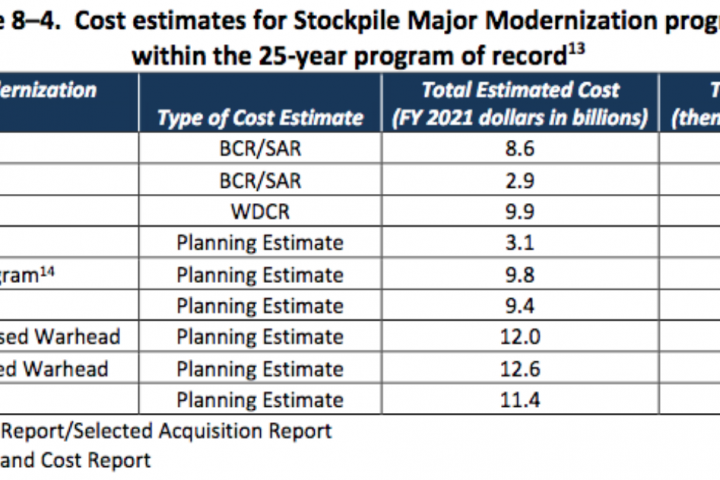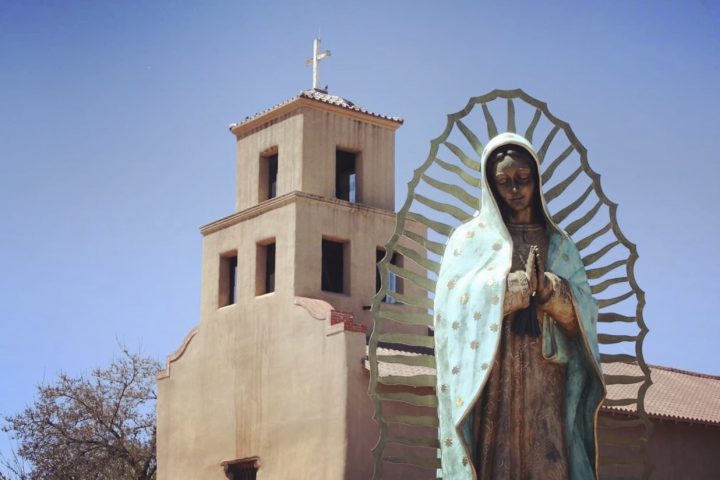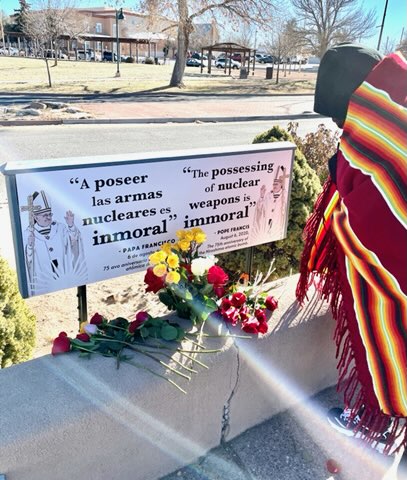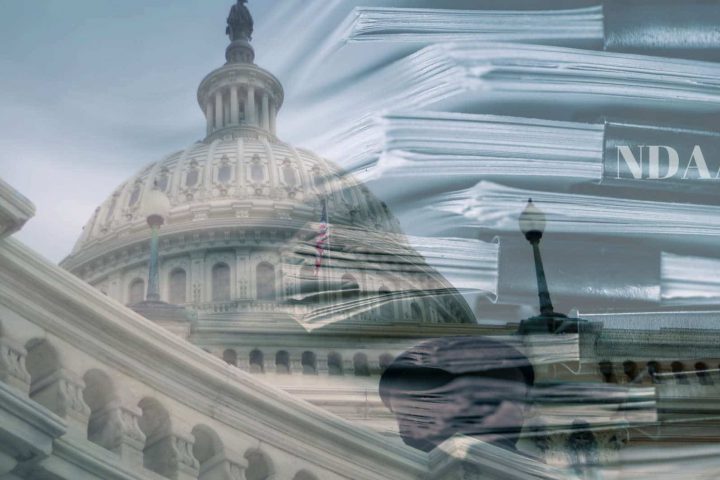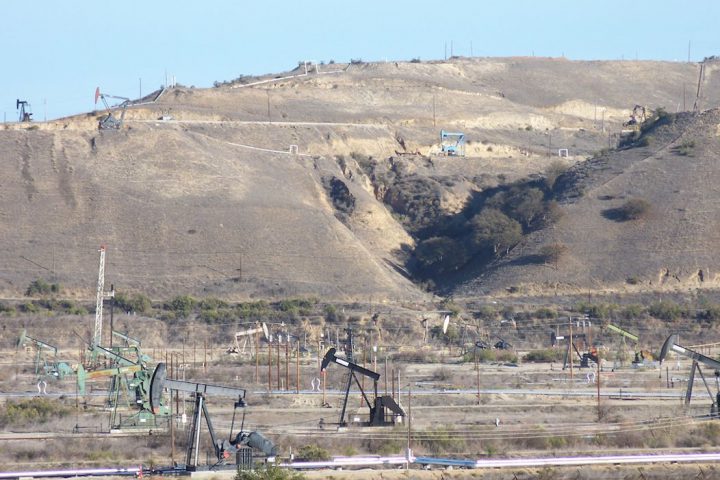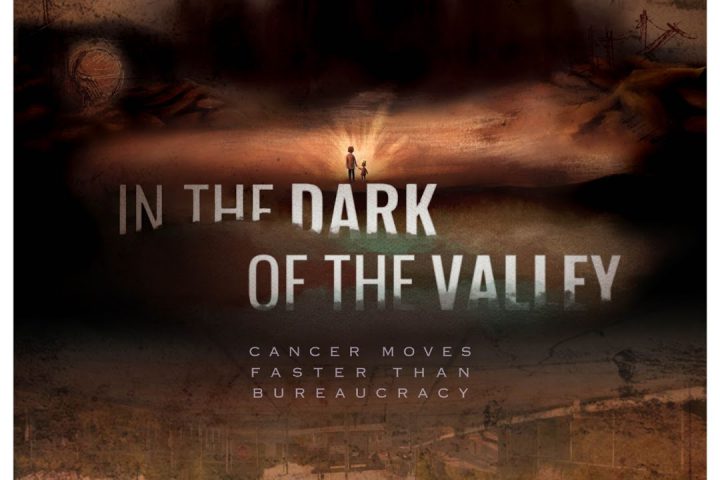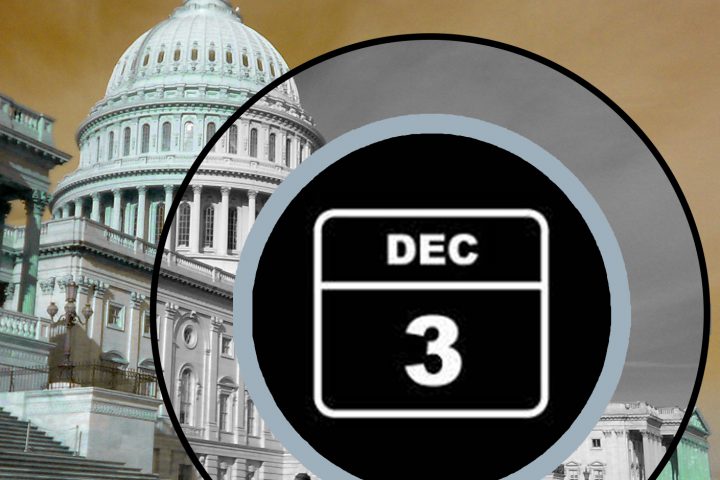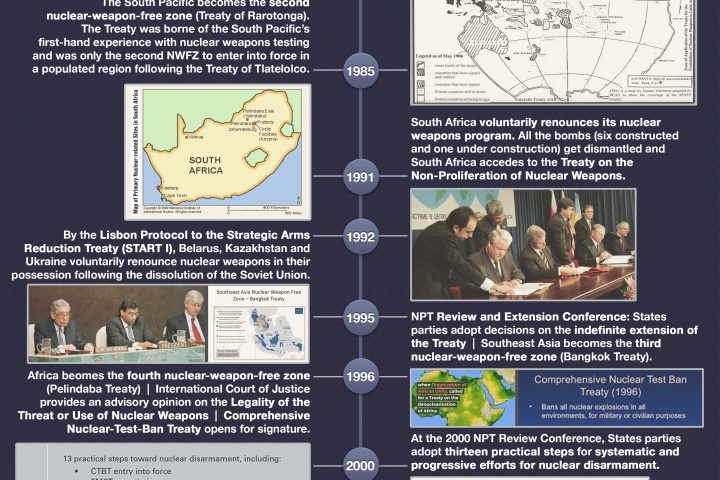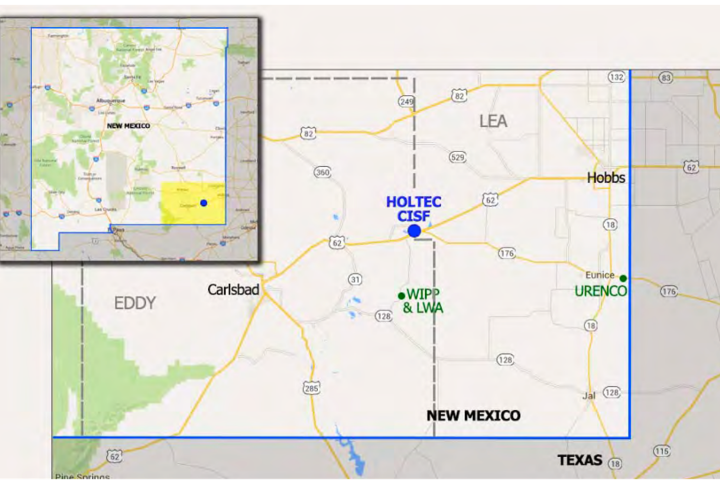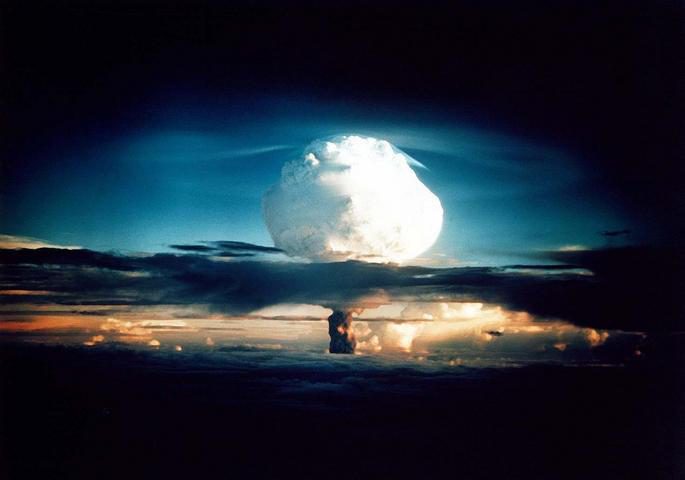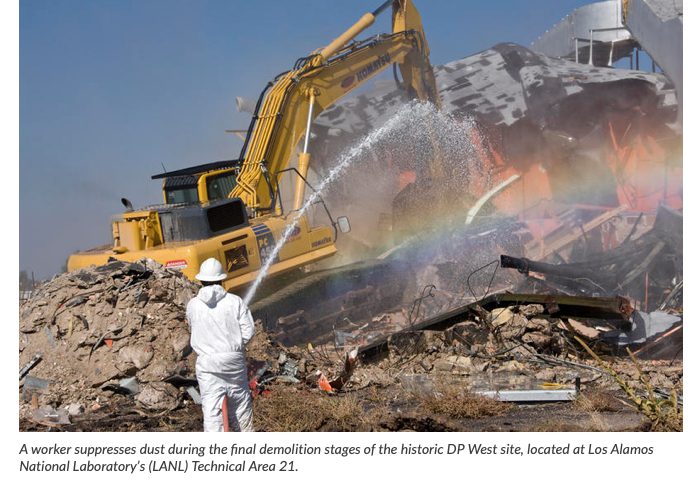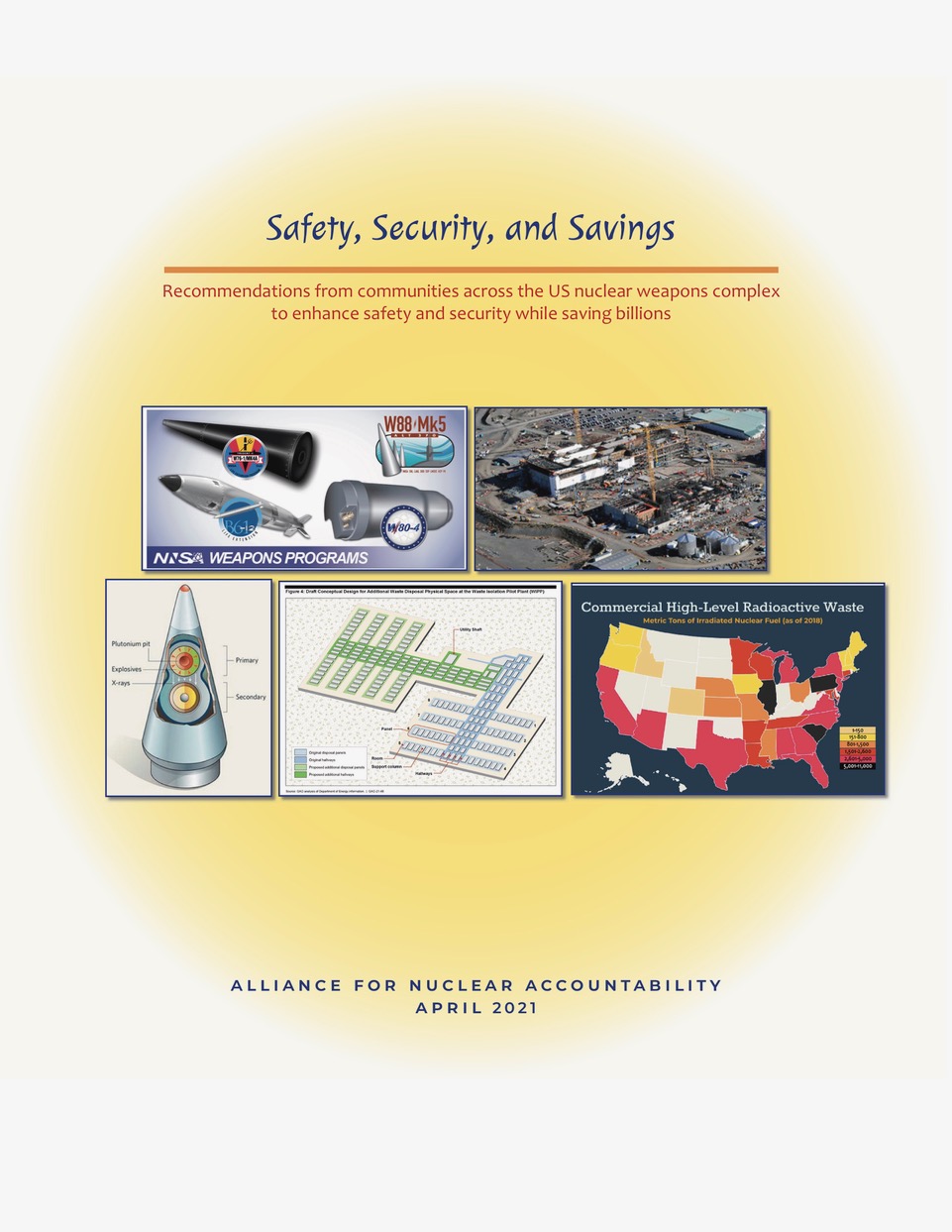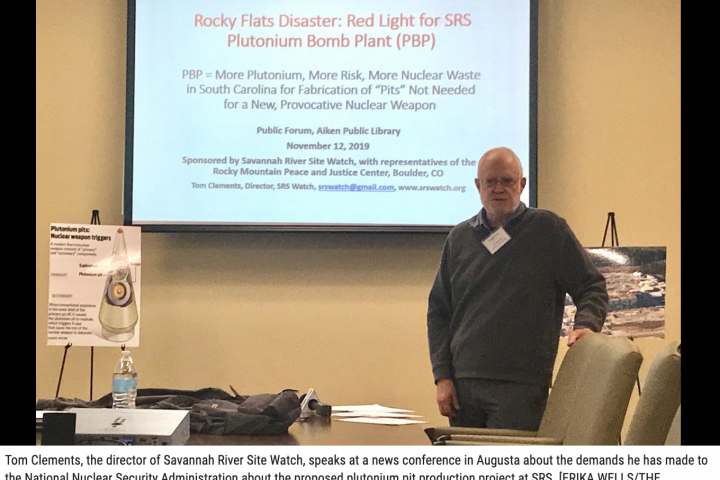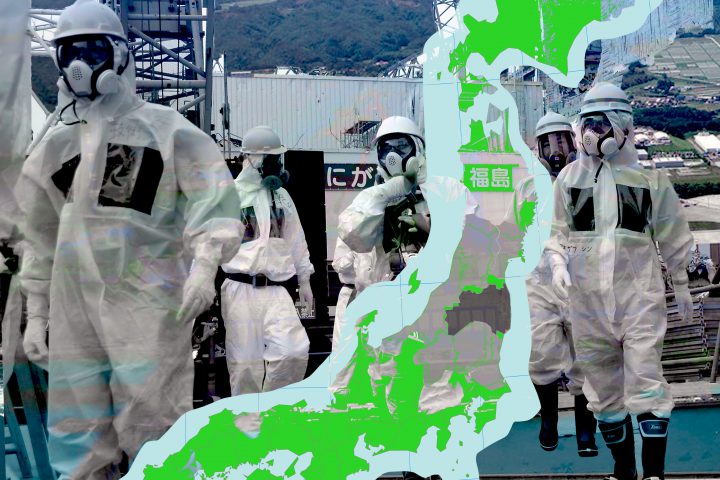The W93 warhead is a proposed new-design submarine-launched nuclear weapon for the Navy. Its need is not clear given that the Navy’s W76 warhead recently completed a major “Life Extension Program” that extended its service life by at least 30 years and increased its accuracy through a new arming, fuzing and firing set. The Navy’s other sublaunched warhead, the W88, is entering a major “Alteration” which will refresh its conventional high explosives and give it a new arming, fuzing and firing set (presumably increasing its accuracy as well).
What’s the Current Status of U.S. and Russian Nuclear Weapons? How Many Exist and Just How Powerful Are They?
The interest in this question has gone up immensely over the past 50 days, since Russia first invaded Ukraine on February 24, and since Russian President Vladimir Putin announced that his country’s nuclear forces had been placed on “high alert” just a few days later on the 27th.
In 1986, there were 70,000 nuclear weapons on the planet—an entirely terrifying number. Nuclear weapons analysts estimate that the world’s nine nuclear states—China, France, India, Israel, North Korea, Pakistan, Russia, the United Kingdom and the United States—have around 13,000 nuclear warheads in total today (Arms Control Association). That build-down started when U.S. President Ronald Reagan and Mikhail Gorbachev, former president of the Soviet Union, agreed under the INF Treaty on the Soviet Union destroying 889 of its intermediate-range missiles and 957 shorter-range missiles, and the U.S. destroying 677 and 169 respectively (Bulletin of the Atomic Scientists).
What are the specifics of where the remaining nuclear weapons possessed by the U.S. and Russia are located? How powerful are they, and, most relevantly, what is the readiness levels of these weapons to launch?
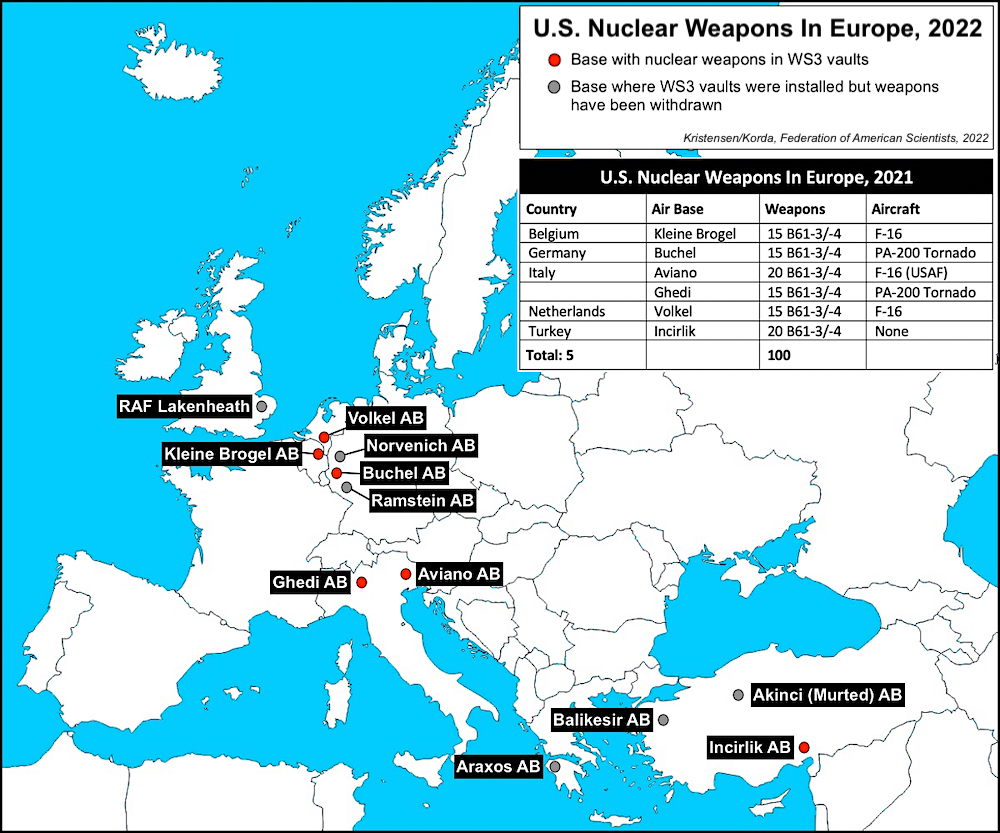
HOW MANY WEAPONS IN THE UNITED STATES?
- WHAT ARE THE LIMITS? On April 8, 2010, the United States and Russia signed New START, a legally binding, verifiable agreement that limits each side to 1,550 strategic nuclear warheads deployed on 700 strategic delivery systems (ICBMs, SLBMs and heavy bombers) and limits deployed and nondeployed launchers to 800 (Arms Control Association).
- WHAT ARE THE ACTUAL NUMBERS? At the beginning of 2021, the U.S. maintained an estimated stockpile of approximately 3,800 nuclear warheads for delivery by 800 ballistic missiles and aircraft (Arms Control Association).
Millennials Memeing Nuclear War
 It seems like my generation has never before experienced this much nuclear fear. And what do we do with it? Laugh any way we can, for one. Putin has threatened the use of nuclear weapons by increasing Russia’s nuclear forces alertness levels and stating in a national address, “…For those who may be tempted to interfere in these developments from the outside, No matter who tries to stand in our way or all the more so create threats for our country and our people, they must know that Russia will respond immediately, and the consequences will be such as you have never seen in your entire history.”
It seems like my generation has never before experienced this much nuclear fear. And what do we do with it? Laugh any way we can, for one. Putin has threatened the use of nuclear weapons by increasing Russia’s nuclear forces alertness levels and stating in a national address, “…For those who may be tempted to interfere in these developments from the outside, No matter who tries to stand in our way or all the more so create threats for our country and our people, they must know that Russia will respond immediately, and the consequences will be such as you have never seen in your entire history.”
Nuclear simulations have come close to capturing the extra-short attention spans of millennials and gen-z, but there’s never been anything like the current real time situation that has ever put this much attention on the reality of the threat of nuclear weapons. And of course the only recourse for a heavy dose of reality is a flood of relevant comedy.
How are we Back Here…? Reflecting on the History of Nuclear Close Calls as Putin’s Threat Reignites Cold War Fears of Nuclear War
“Sadly, we are treading back through old historical patterns that we said that we would never permit to happen again,”
– Fiona Hill, Former Senior Director for Europe and Russia at the United States National Security Council, in an interview with POLITICO, today, February 28, 2022: ‘Yes, He Would’: Fiona Hill on Putin and Nukes
President Biden Should Let His Faith Guide Him Toward Nuclear Disarmament
Did you see what the Santa Fe Archbishop wrote in the very heart of the U.S. nuclear weapons complex?
“With this pending Nuclear Posture Review, President Biden has the opportunity to show his moral leadership. I know he is capable. After all, much of what is needed is only to turn his own past words into new policy—and to reject today’s fearful status quo, embracing a new path that we can all live with.”
Read the entire article here and see the picture.
Happy Are Peacemakers Who Wake Up the Rest of Us
“The difference is that [Santa Fe Archbishop] Wester is alone and standing in what came to be the center of the “American Nuclear Soul” in Santa Fe calling us again to examine our American consciences. As Pope Francis said at the Peace Memorial in Hiroshima on Nov. 24, 2019, “The use of atomic energy for purposes of war is immoral, just as the possessing of nuclear weapons is immoral. … How can we speak of peace even as we build terrifying new weapons of war?”
Current U.S. Nuclear Weapons Issues: New Year’s Update — January 15, 2022
U.S. nuclear weapons issues:
- In anticipation of the NonProliferation Treaty Review Conference that was to start January 4 the P-5 (original nuclear weapons powers U.S., Russia, China, France and U.K.) came out with an unbelievable collective statement on how they are in compliance with the NPT Article VI mandate to disarm. Then the Review Conference was indefinitely postponed because of omicron.
- Biden signed the FY 2022 Defense Authorization Act (DAA). Congress gave the Pentagon $24 billion more than Biden asked for. So much for ending endless wars. The DAA fully authorizes what the Biden Administration asked for National Nuclear Security Administration nuclear weapons programs, which increased Trump’s FY 2021 budget which saw a 25% from his FY 2002 budget. LANL is to get a cool billion in FY 2022 for expanded plutonium pit production alone.
- Still no appropriations. Second Continuing Resolution (CR) runs out in February.
- First anniversary of Treaty on the Prohibition of Nuclear Weapons January 22
Signs Calling for a Future of Peace Through a Reminder of the Past
Less than a week before the Christmas holiday, over 125 people came together at the statue of Our Lady of Guadalupe in the afternoon of Sunday, December 19th to listen to Archbishop John C. Wester of the Archdiocese of Santa Fe give a blessing to two “signs of peace” he unveiled on-site during a short ceremony. The signs were revealed to show an image of Pope Francis and a quote uttered by the pope in Hiroshima in 2020: “The possession of nuclear arms is immoral.” During the blessing, the Archbishop spoke on his memories of “those days during the Cuban missile crisis when I would walk home from school having been instructed what to do in the event of a nuclear attack within a few thousand yards of a nuke missile site in San Francisco,” before issuing a call for the world to rid itself its nuclear weapons.
“We need to be instruments of peace,” he said, especially as we head into the Christmas season, a “season of peace.”
Wester said that the current arms race “is more ominous” than any that came before. He touched on the growing tension around the Russia-Ukraine border in mentioning that there are at least “40 active conflicts in the world,” and said “our archdiocese needs to be facilitating, encouraging an ongoing conversation” about nuclear disarmament. This is especially true in light of the fact that two of the US’s three nuclear weapons laboratories are to be found in the dioceses of Sandia and Los Alamos, and on top of that there are more nuclear warheads in his dioceses from the 2,500-some count stored in reserve at the Kirtland Air Force Base at Albuquerque. All of this means that more money is spent in his dioceses than any other dioceses in the country and perhaps the world.
Current U.S. Nuclear Weapons Issues: Monthly Update — December 15, 2021
FY 2022 National Defense Authorization Act: The Bad News.
As Politico put it:
PROGRESSIVES’ PENTAGON POUNDING: … progressives barely put their stamp on Pentagon policy this go-round. Bipartisan provisions requiring women to register for the draft, cracking down on Saudi Arabia and imposing sanctions on Russia were nixed; legislation repealing outdated Iraq war authorizations fell by the wayside; reforms to the military justice system and efforts to combat extremism in the ranks were pared back; and a proposal to give Washington, D.C., control of its National Guard was dropped,” they wrote. Democrats hold power in the House, Senate and White House for the first time in more than a decade, yet the high-profile defense bill got more GOP votes than from Biden’s own party. As progressive lawmakers made their dissatisfaction with the bill’s high price tag clear, centrist Democrats knew they needed Republican support to pass the House and Senate.”
Progressives truly felt they had a historic chance to turn their priorities into policy, but the realities of a 50-50 Senate with no filibuster made that near impossible. And with midterms next year, it’s likely they missed their best chance.
Nuclear weapons: Congress added $500 million to Biden’s request for NNSA Total Weapons Activities, which was essentially Trump’s request to begin with. Trump’s Sea-Launched Cruise Missile and B83 (1.2 megatons) service life program were kept. $1.72 billion request for “Plutonium Modernization” authorized.
- However, the NDAA is authorization, not appropriations. The 2nd Continuing Resolution runs until February after which the appropriators will have to come up with something. There’s a chance that the Sea-Launched Cruise Missile and B83 sustainment program could be shot down. While those would be notable victories, they really only amount to damage control (i.e., rolling back two of Trump’s pet projects) as the $1.7 trillion modernization beast lumbers on.
Where to Store the Nation’s Nuclear Waste? No One Has the Answer, Exactly. But It’s Probably Not “In a High-Risk Seismic Zone.”
It seems obvious that “when assessing the aptitude of a site to receive a deep nuclear-waste repository, seismic activity should be taken into account.” (IAEA). At the moment, the only repository of this kind in the U.S. is the Waste Isolation Pilot Plant (WIPP), the nation’s main nuclear weapons waste storage site. WIPP lies a half mile underground in a salt formation in southeastern New Mexico. Additional nuclear waste storage facilities are planned to be built nearby, along the border between southeastern New Mexico and west Texas, where risks of quakes caused by oil and gas fracking operations in the area are rising.
“The occurrence of smaller earthquakes began to increase in 2017, when oil and gas boomed in the region, up to about three per day recently. In 2021, records show the region was on track for more than 1,200 earthquakes with magnitudes of 1 to 4.” KRQE
In New Mexico in July, a 4.0 temblor shook the southeast corner of the state. Meanwhile, just over the border on the Texas side, the U.S. Nuclear Regulatory Commission approved a high-level waste facility, and Holtec International is trying to put their share of the nation’s commercial nuclear waste there as well, on the New Mexico side.. Holtec, with support from the Nuclear Regulatory Commission, wants to build a nuclear waste storage facility for up to 100,000 tons of spent nuclear fuel rods 12 miles north of WIPP, a plan opposed by New Mexico Gov. Michelle Lujan Grisham and others in state government.
“All of these nuclear sites are surrounded by brine injection wells, the likely cause of the increased seismicity in the basin.” Source NM
LANL Plans to Address Possibly Exploding Drums Shipped to Texas in 2014
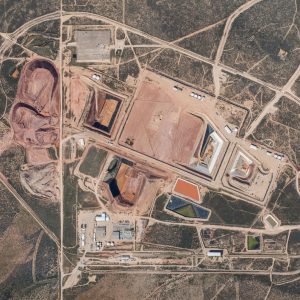
Los Alamos National Laboratory (LANL) has given itself a Categorical Exclusion (CX) under National Environmental Policy Act (NEPA) for the removal, relocation, and examination of transuranic (TRU) waste drums at Waste Control Specialists (WCS). These drums are similar to the ones that forced WIPP to close in 2014. LANL officials decided that formal environmental assessments, with public input, of the movement of the possibly exploding waste drums are not needed.
Guest Blog: Associate Director of Physicians for Social Responsibility-Los Angeles, Denise Duffield, on the Fight to Clean up California’s Contaminated Santa Susana Field Laboratory (SSFL)
Dear Friends and Colleagues:
Tonight, MSNBC will air a powerful documentary called “In the Dark of the Valley” at 7 p.m. PST/ 10 p.m. EST. The film follows the story of Melissa Bumstead, a mother whose search for answers about her young daughter’s cancer leads her to the contaminated Santa Susana Field Laboratory (SSFL), a former nuclear and rocket engine testing site near Los Angeles. I have been involved in the fight to clean up SSFL for 15 years, and PSR-LA has been involved for over 30 years. PSR-LA Board President Dr. Bob Dodge and I are featured in the film, along with our longtime ally Dan Hirsch, President of Committee to Bridge the Gap; generations of SSFL cleanup activists, and many others.
I urge you to watch the documentary tonight or record it to watch later. Not only is the film masterfully done and visually stunning, it manages to capture the heart of one of the longest and most intensely fought battles to clean up a contaminated site in the US. That’s a big deal.
I’m writing to you all today because as I reflect on the fight to cleanup SSFL — the struggles, the hard work, the heartache, the setbacks, the frustration, the power of the forces we’re up against, the greenwashing, the gaslighting,the personal sacrifices made by so many, the folks we’ve lost along the way — the fact that this film was made so well and is going to be broadcast nationally is more than a big deal. It’s a victory. And victories, especially in these troubled times, should be shared and savored. Particularly for those of you who don’t know as much about SSFL, understanding just how brutal SSFL cleanup advocacy is, and how amazing the community and cleanup advocates are, makes this film — this victory — even sweeter.
Current U.S. Nuclear Weapons Issues Updates — November 15, 2021
The current Continuing Resolution keeping the government running expires 12/3. Another Continuing Resolution is likely.
The Pentagon has released a major threat assessment of China at https://media.defense.gov/2021/Nov/03/2002885874/-1/-1/0/2021-CMPR-FINAL.PDF.
Under “Nuclear Capabilities” it concludes:
► Over the next decade, the PRC [People’s Republic of China] aims to modernize, diversify, and expand its nuclear forces.
► The PRC is investing in, and expanding, the number of its land-, sea-, and air-based nuclear delivery platforms and constructing the infrastructure necessary to support this major expansion of its nuclear forces.
► The PRC is also supporting this expansion by increasing its capacity to produce and separate plutonium by constructing fast breeder reactors and reprocessing facilities.
► The accelerating pace of the PRC’s nuclear expansion may enable the PRC to have up to 700 deliverable nuclear warheads by 2027. The PRC likely intends to have at least 1,000 warheads by 2030, exceeding the pace and size the DoD projected in 2020.
► The PRC has possibly already established a nascent “nuclear triad” with the development of a nuclear capable air-launched ballistic missile (ALBM) and improvement of its ground and sea-based nuclear capabilities.
► New developments in 2020 further suggest that the PRC intends to increase the peacetime readiness of its nuclear forces by moving to a launch-on-warning (LOW) posture with an expanded silo-based force.
This is bound to have a major influence on Biden’s Nuclear Posture Review, to be released in early 2022. China’s expansion of its nuclear weapons capabilities, along with U.S. and Russian “modernization” programs, may also be big issues at the January 2022 NonProliferation Treaty Review Conference.
An Environmental & Nuclear Disaster in LA’s Backyard: How Much Contamination Really Fell on Top of Communities from Thousand Oaks to Simi Valley from the Woolsey Fire?
The Santa Susana Field Laboratory (SSFL) is a 3,000 acre site sitting on top of the San Fernando and Simi Valleys in California, located less than 30 miles from Malibu. In 1947 the site was developed as a central location for U.S. rocket engine testing and space exploration, and in the 1950’s SSFL began experimenting with constructing nuclear reactors.

Ten nuclear reactors were built in total, and tens of thousands of rocket, energy, and weapons tests took place there from when the laboratory went into operation in 1947 until it’s closure in 2006. The rocket engine tests specifically produced numerous toxic spills and releases. The nuclear reactors built include a “Hot Lab” to “cut up irradiated reactor fuel from around the country,” “plutonium and uranium-carbide fuel fabrication facilities,” and a “sodium burn pit in which open-air burning of contaminated reactor components took place.” One of the reactors, the Sodium Reactor Experiment, experienced a partial nuclear meltdown in 1959, and two other reactors experienced accidents with fuel damage as well.
Current U.S. Nuclear Weapons Issues Updates — October 15, 2021
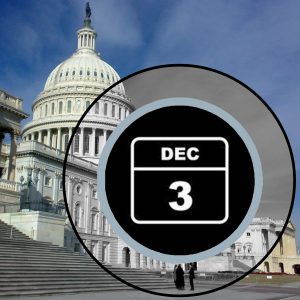
Congress passed a continuing resolution that keeps the government running until December 3. It freezes funding at 2021 levels which at least prevents short-term budget increases for nuclear weapons modernization programs and has no “anomalies” (i.e. exceptions) for these programs. That said, Biden passed on most of Trump’s nuclear weapons excesses forward in his FY 2022 budget, so it’s not like it makes a whole lot of difference.
Mitch McConnell agreed to let the Democrats raise the national debt ceiling, thereby averting national and international economic disaster. How gracious of him.
Democrats and Republicans joined together to roll Biden on the money in the FY 2023 Defense Authorization Act for the entire military (including the National Nuclear Security Administration (NNSA). These bipartisan porkmeisters added $23.9 billion for $768 billion in total defense spending. The new bogeyman China was repeatedly invoked as the rationale (in comparison China now spends around $250 billion annually on its military).
Continue reading
International Day for the Total Elimination of Nuclear Weapons 2021
Today, Sunday, September 26, 2021, marks the United Nations International Day for the Total Elimination of Nuclear Weapons. The United Nations has been working toward achieving global nuclear disarmament since the organization’s inception; it was the subject of the General Assembly’s first resolution in 1946, with a mandate to make specific proposals for the elimination of atomic weapons and all other major weapons adaptable to mass destruction. The International Day for the Total Elimination of Nuclear Weapons has been observed annually since 2014, serving as a tool to enhance public awareness and education about the threat posed to humanity by nuclear weapons and the necessity for their total elimination. In 2013, the year the International Day for the Total Elimination of Nuclear Weapons was introduced, the President of the General Assembly noted that a “renewed international focus on the catastrophic consequences of nuclear weapons has led to a reinvigoration of international nuclear disarmament efforts.”
This is OUR Neighborhood: Expanding the Capacity of New Mexico’s Nuclear Waste Repository Affects Communities across the Country.
The original mission of the Waste Isolation Pilot Plant (WIPP) in southeastern New Mexico had two specific stipulations: it was to be the FIRST and only operating underground nuclear waste repository in U.S; and it is ONLY authorized to take a certain kind of nuclear weapons waste – legacy transuranic (TRU) waste. In December of last year, the U.S. Department of Energy published a notice of intent to expand WIPP. The notice details expansion of the plant in two ways: capacities and types of waste permissible, as well as extended storage/operation timelines. The federal government’s plans would expand the size of the nuclear weapons dump to more than twice its current size and more than is allowed: Federal law and legal agreements with New Mexico clearly limit the amount of waste at WIPP, but the expansion would allow more than that capacity (as described in the April 2020 National Academy of Sciences Report “Review of the Department of Energy’s Plans for Disposal of Surplus Plutonium in the Waste Isolation Pilot Plant.”) This means an increased volume of waste, as well as an increased number of shipments travelling to WIPP over the entire rest of the century.
76 Years After the First Nuclear Bomb Test, the U.S. is Still Dead Set on Building New Weapons of Mass Destruction
Last week, July 16 2021, marked the 76th anniversary of the world’s first nuclear bomb explosion. Within another month, memorials and commemorations will be held for the Japanese cities of Hiroshima and Nagasaki, which the U.S. bombed on 6 and 9 August 1945, respectively. Although it was unknown to most residents of New Mexico until after the United States’ atomic bombing of Japan, the citizens and communities in the southern region of the state were in fact the first nuclear victims.
When the U.S. Army detonated an atomic bomb on July 16, 1945 at 5:29 a.m., “its thunderous roar during the rainy season knocked people from breakfast tables in Tularosa and sent others on the Mescalero Apache reservation into hiding.” (axios.com) Hispanics and Mescalero Apache tribal members in New Mexico are working to pressure lawmakers to compensate those who have suffered extremely because of the experiment. Rare forms of cancer and other health problems have been discovered in those living near the site of the Trinity Test, and the vast, noxious consequences of this experiment have had lasting impact on now multiple, entire generations.
South Carolina Environmental Law Project and Nuclear Watchdogs Virtual Press Conference
Nuclear Watch New Mexico, along with other watchdog groups, has announced a lawsuit against the Biden administration over its expanded production of plutonium cores for the U.S. nuclear weapons “modernization” plans. There has been inadequate environmental review by federal agencies, who have failed to detail potential impacts of the projects around communities in New Mexico and South Carolina.
The lawsuit was filed against the Energy Department and the National Nuclear Security Administration demanding the federal agency that oversees U.S. nuclear research and bombmaking must “take a legally required ‘hard look’ at impacts on local communities and possible alternatives before expanding manufacturing of the plutonium cores used to trigger nuclear weapons.”
The push from U.S. officials to “modernize” the country’s nuclear arsenal cites only general global security concerns that do not justify the science and brand new, untested technology that will be necessary to the task. citing global security concerns. Although “most of the plutonium cores currently in the stockpile date back to the 1970s and 1980s,” scientific experts estimate that plutonium pits will last 100 years or more., and on warhead type, the best estimate of minimum pit life is 85–100 years.minimum.
Los Alamos National Laboratory in northern New Mexico and the Savannah River Site near Aiken, South Carolina face enormous (and, frankly, unrealistic) deadlines to produce a massive number of plutonium cores in coming years – 50 or more cores at South Carolina and 30 or more at Los Alamos National Lab. The Savannah River Site location now has estimated costs up to $11.1 billion, with a completion date ranging from 2032 to 2035. The U.S. doesn’t need the new plutonium cores with the taxpayer bearing the burden for the expense of lagging deadlines and bloated budgets.
“The watchdog groups said Tuesday that the agency took a piecemeal approach to decide on locating the production at Los Alamos and the Savannah River Site, where nearby communities are already underrepresented and underserved.”
Tom Clements of Savannah River Site Watch said the South Carolina location was picked for political reasons following the failure of a facility designed to convert weapons-grade plutonium into commercial nuclear fuel. As the Savannah River Site has never served as a storage or production site for the pits in its history, establishing pit construction there would be “a daunting technical challenge that has not been properly reviewed,” Clements said.
With very real, current threats the U.S. is facing right now, we don’t need another Rocky Flats situation in New Mexico or South Carolina where a $7 billion, yearslong cleanup is required after the facilities fail due to leaks, fires and environmental violations, doing irreparable damage to the earth and placing communities there in unequivocal peril.
Cleanup Funding Request at Los Alamos Would Be Needed Increase
DOE Environmental Management released the Fiscal Year 2022 (FY22) Congressional Budget Request and asked for a $107.5 million increase over last year for legacy cleanup at Los Alamos National Laboratory (LANL). The FY22 EM funding request for cleanup at LANL totaled $333.5 million, which was a record request for cleanup at the Lab.
The Budget Request gives lifecycle costs. LANL has spent $3.8 billion on cleanup from 1997 to 2020. The high estimate is $4.6 billion for FY21 to FY90. This gives a total lifecycle cost of $8.4 billion from 1997 through 2090. The assumption included with these estimates is that most of the waste will remain buried at LANL. This is the first time DOE has mentioned legacy cleanup lasting until 2090. Last year the completion date was given as 2036.
Is legacy cleanup completion being pushed back to prioritize pit production? If DOE starts spending more on cleanup like this year in the future, shouldn’t cleanup take less time? The numbers work out to DOE only spending an average of $50 million between now and 2090, so DOE must not have plans to spend $330 million annually through 2090.
Modernization: The Mainspring of NNSA FY 2022 Budget Request in the Form of Ballooning SRS Pit Costs
The National Nuclear Security Administration’s detailed fiscal year 2022 budget request was (partially) unveiled last week on Friday, May 28, in the evening before a long holiday weekend. The Biden Administration’s total NNSA FY22 budget request is just under $20 billion, requesting of $15.48 billion for NNSA “Total Weapons Activities” and following suit with Trump’s excessive nuclear weapons budget of $15.35 billion that Congress appropriated for FY 2021.
Of particular note in the budget request is that it will cost more than double what the National Nuclear Security Administration had previously estimated for the total of DOE’s Plutonium Bomb Plant construction at Savannah River Site in South Carolina. The facility would be a converted production plant for the fabrication of plutonium “pits,” the triggers for nuclear warheads. The cost for the plant has ballooned from the previous estimate of $4.6 billion to a now staggering $11.1 billion. What’s more, the schedule for the facility’s initial operation has slipped up to five years. The plans for the SRS Plutonium Bomb Plant have already run far over budget and fallen behind schedule, and “these troubling and potentially debilitating developments foreshadow problems to come to the challenging pit-production project,” according to the public interest group Savannah River Site Watch.
MEDIA ADVISORY: WHAT TO LOOK FOR IN THE U.S. DEPARTMENT OF ENERGY’S FY 2022 NUCLEAR WEAPONS AND CLEANUP BUDGET REQUEST
For use with DOE’s scheduled budget release on Friday May 28, 2021
For more information, key contacts are listed below.
The White House is releasing its detailed Fiscal Year 2022 budget on Friday, May 28. A so-called “skinny budget” was released on April 9 that increased Department of Energy (DOE) funding to $46.1 billion, which reportedly includes major new investments in clean energy and climate change abatement. That said, historically roughly 60% of DOE’s funding has been earmarked for nuclear weapons production and cleanup of Cold War wastes and contamination. The pending budget release will finally provide details on those programs.
Because the budget release is so late Congress has already announced that it can’t consider the annual Defense Authorization Act until September. Related appropriations bills will no doubt be delayed too. This means that the government will probably have to run on a Continuing Resolution(s) for much of FY 2022 (which begins October 1, 2021).
The Alliance for Nuclear Accountability strongly opposed the massive 25% FY 2021 increase that the Trump Administration gave to the National Nuclear Security Administration’s (NNSA’s) nuclear weapons programs and proposed cuts to Department of Energy cleanup. In addition, DOE’s nuclear weapons and environmental management programs have been on the Government Accountability Office’s “High Risk List” for project mismanagement and waste of taxpayers’ dollars for 28 consecutive years. Related, the Congressional Budget Office (CBO) has just released a report that projects a 28% increase in costs for so-called “modernization” of U.S. nuclear forces that between the Defense Department and DOE is expected to cost around $1.7 trillion over 30 years.
The Alliance for Nuclear Accountability, a 34-year-old network of groups from communities downwind and downstream of U.S. nuclear weapons sites, will be analyzing the following critical issues. For details, contact the ANA leaders listed at the end of this Advisory.
Virtual Advocacy for “Safety, Security, and Savings” at ANA DC Days:
May 26, 2021
Nuclear Watch New Mexico virtually visited Washington, DC this month to participate in the Alliance for Nuclear Accountability’s “DC Days,” an annual event where organizations from across the nation, whose members are directly affected by nuclear weapons production and the incidental health and environmental consequences, make their voice heard to federal policy makers.
Nuclear Watch NM was focused on opposing new plutonium pit production at Savannah River Site and Los Alamos, pushing for safe and secure toxic cleanup and prioritizing public health while saving billions by terminating ill-conceived new nuclear weapons programs. View more information on these issues in the Alliance for Nuclear Accountability’s new report, “Safety, Security, and Savings,” which describes in detail the foundation of our 2021 advocacy. The report includes a series of fact sheets and recommendations covering new warheads, bomb plants, nuclear waste, cleanup, and more.
Notice of Impending Lawsuit to DOE & NNSA Over Nuclear Bomb Core Plans from Environmental Groups
Nuclear Watch New Mexico, as part of a larger coalition of environmental groups, has threatened the federal government with a lawsuit over cross-country plans to produce plutonium pits, the cores at the heart of modern nuclear weapons.
A more comprehensive review should have been done on the plans to produce plutonium cores at Los Alamos and at the Savannah River Site in South Carolina. This lack of review violates the National Environmental Policy Act (NEPA) and would saddle already-burdened communities nearby the two DOE sites with significant quantities of toxic and radioactive waste, contravening President Biden’s executive order of making environmental justice a part of the mission of every agency. Here in New Mexico, we are well aware of how much our local community has already have been burdened with legacy contamination from previous defense work. While the budget continues to be cut and slashed for cleanup funding, the astronomical cost of modernizing the U.S. nuclear weapons arsenal continues to balloon out of proportion without NNSA or DOE batting an eyelash. The federal government’s plans are unnecessary and provocative – more plutonium pit production will result in more waste and help to fuel a new arms race.
10 Years Since Fukushima Nuclear Disaster
11 March 2021 marks the 10th anniversary of the triple catastrophe which marked the life of many residents of Eastern Japan: a powerful earthquake, deadly tsunami and nuclear meltdown that left almost 18,500 people killed or missing. Much has been achieved in disaster-hit areas but they are still seriously recovering, and the staggering loss of life and community is still being felt by the nation today. The impacts on communities from the ongoing dispersal of radioactive contamination released from the explosions at the Daiichi nuclear power plant in Fukushima have been disastrous. Tokyo will probably face a massive earthquake in the next 30 years, and Japan must prepare for this next big quake while the Fukushima nuclear meltdown on Japan’s north-eastern coast remains firmly in the minds of everyone there.
Since the disaster, tens of thousands of people have been displaced from their ancestral lands. The harm extends far beyond the immediate threat to health – as well as destroying livelihoods, it has destroyed an entire way of life.

